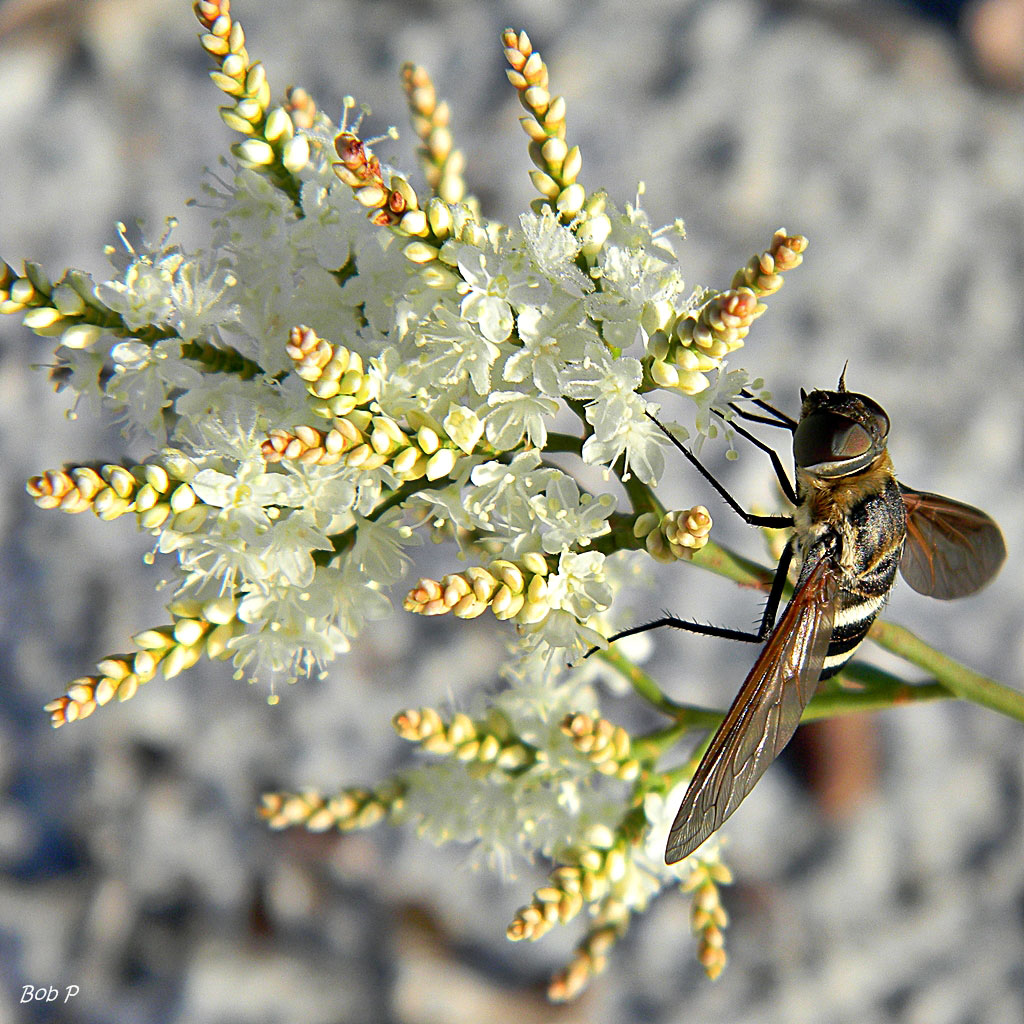October flower
Pictured above: Bee fly on October flower (Polygonum polygamum) by Bob Peterson (CC BY 2.0). Click on terms for botanical definitions. View post as a PDF
October flower is a subshrub found in sandhill, scrub and scrubby flatwoods throughout much of Florida. For most of the year, it is a rather understated plant. But in late summer and fall — particularly October — it is covered in a profusion of snowy white blooms. These small but prolific flowers are especially attractive to native bees.
October flowers are born in short racemes. Lacking a true corolla, each flower is composed of five white to pinkish-white tepals and subtended by a papery bract. Flowers are dioecious, meaning male and female parts are born on separate flowers. Leaves are simple, grayish-green and linear to spatulate. They typically measure no more than ¾ inch long and ¼ inch wide. Leaves are alternately arranged and have stipules at the bases. Stems may be woody or herbaceous, and erect or decumbent. Fruits are small reddish-brown achenes.
Formerly known as Polygonella polygama, Polygonum polygamum can be further classified into three varieties: P. polygamum var. polygamum is found throughout much of the state; P. polygamum var. brachystachya is endemic to South Florida; and P. polygamum var. cromii occurs mostly in the Carolinas. The genus names Polygonella and Polygonum (as well as the family name Polygonaceae) are derived from the Greek poly, or “many” and gonu, meaning “knee” or “joint.” This refers to the swollen nodes that many of the species in the family possess.
Family: Polygonaceae (Knotweed, smartweed or buckwheat family)
Native range: Throughout Florida
To see where natural populations of October flower have been vouchered, visit florida.plantatlas.usf.edu.
Hardiness: Zones 8A–10B
Lifespan: Short-lived perennial
Soil: Moist to dry, well-drained sandy soils
Exposure: Full sun to minimal shade
Growth habit: 2–3 feet tall, equally wide
Propagation: Seed, cuttings
Garden tips: October flower is best suited for naturalistic and restoration landscapes, but it can be used in a home landscape as a specimen plant or mixed with other wildflowers and grasses. Although it is short-lived, it will reproduce by self-sown seed. It is drought tolerant but does not tolerate salt or periods of inundation.
Plants are occasionally available from nurseries that specialize in Florida native plants. Visit www.PlantRealFlorida.org to find a nursery in your area.

